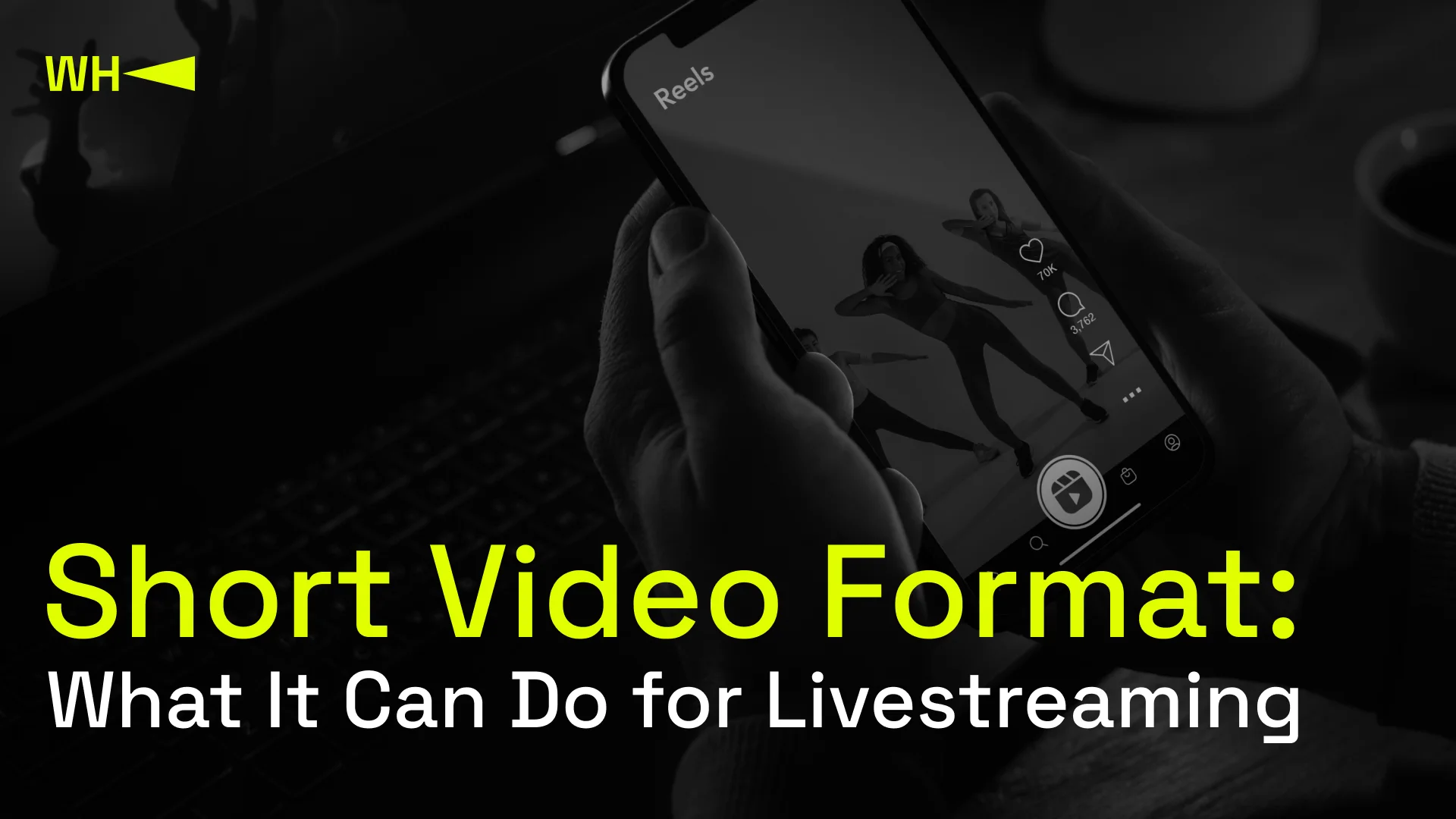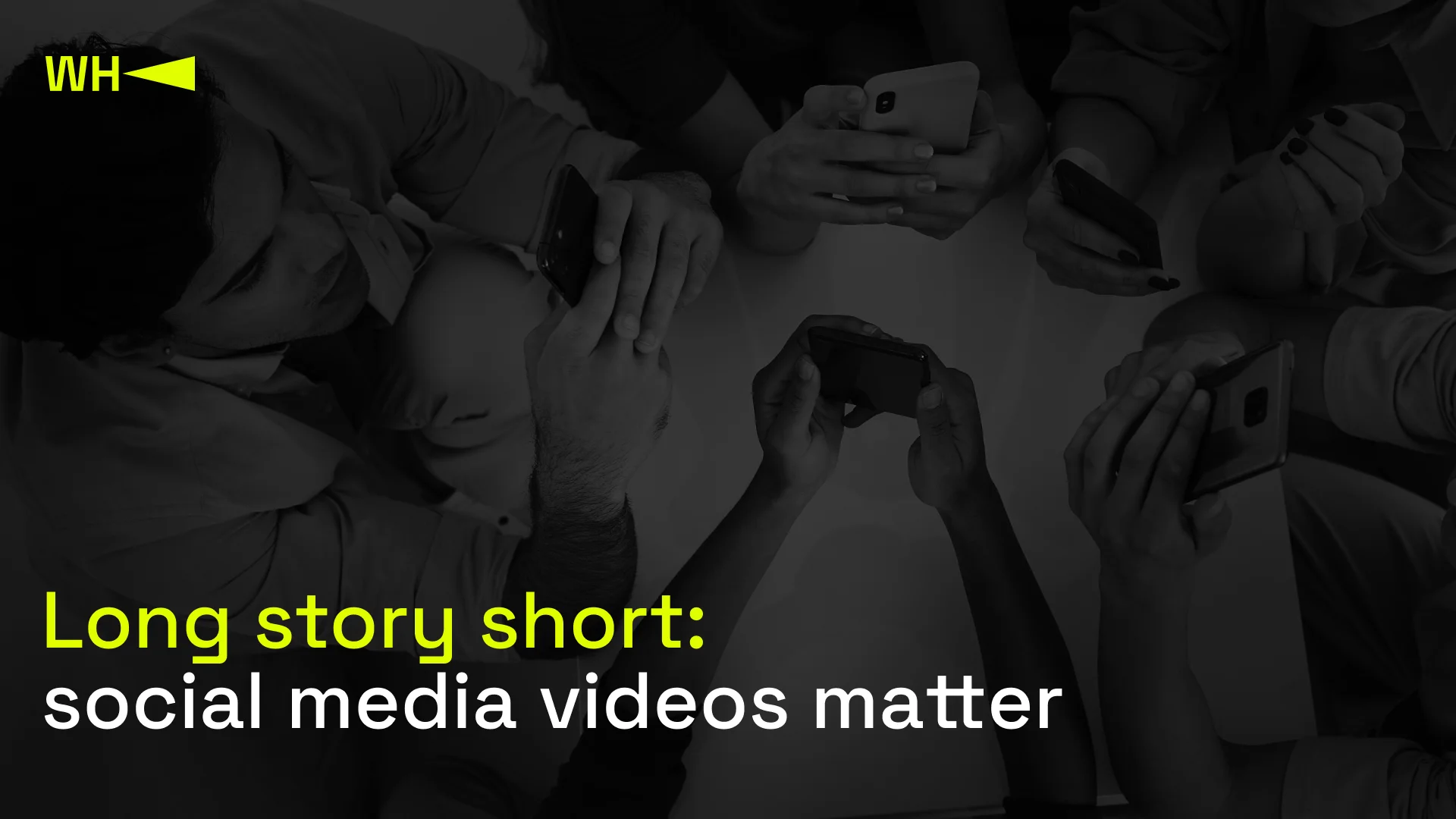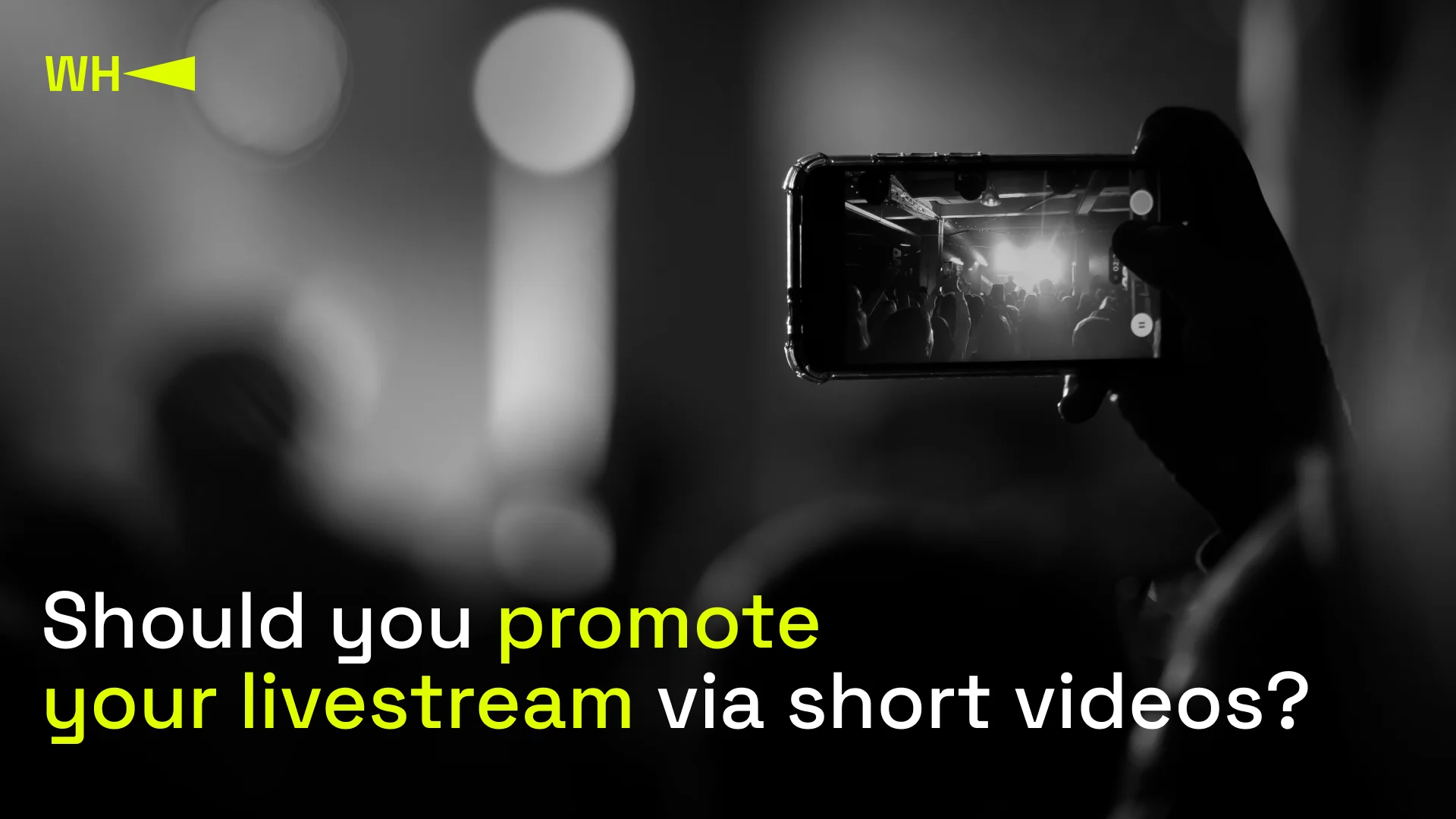Jan. 19, 2024
Short Video Format: What It Can Do for Livestreaming

5 min read
Video is content king and can additionally encompass almost any other format, be it photo, music, or infographic. However, not all videos are the same: there are livestreams, short videos, step-by-step video instructions, and much more. Each format serves its specific purpose and requires different resources and investments.
Particularly, short video production is used by many content creators, including up-and-comers, because it doesn’t usually require a large investment. Basically, anybody can create a short video with a camera, mic, and a few tools. Plus, this type of content ranks well on social media.
Long story short: social media videos matter
According to statistics from Sprout Social, consumers find short videos 2.5 times more engaging than long ones. Not that every post on social media must necessarily be a video, but it is important to use the format. Videos on Instagram or Twitter gather more likes, comments, and replays. Subscribers are more inclined to share a video, which means additional traffic for brands and content creators.
But short videos exist not only as a separate type of entertaining content but also as a tool for promoting other — long — video content. Sprout Social informs that 47% of social media users follow brands on YouTube. Now picture this: about 500 hours of video are uploaded to YouTube every minute. And while content creators fight for views among loads of content, brands already have this touchpoint to tap into.
Types of short videos by intent
Now, let’s talk in general about what short social media videos companies can use and which of them are a good fit for promoting livestreams.
Educational videos are the ones used to share information with consumers. The more relevant and unique the experience you convey, the more reactions you will get from your audience. However, there is a blowback for poor-quality content. If your short video is not original or does not carry useful information, then the consumer looking for educational content will most likely skip it. Not only may you lose your potential reach and engagement results, but low-quality content can have a detrimental effect on your profile standing. On almost all social media platforms, a quick skip is a signal that your content is of no interest to the viewer, and it can be reflected in your ranking on the platform in the future.
Entertaining. It is up to you to decide what to consider entertaining content. It could be music, quizzes, humorous videos — in a word, what the audience likes. Previously, there was a misconception that only entertaining videos have the potential to become viral. However, the reach of a video depends not on its format but on the information it carries. Simply put, if your video makes one want to share it for any reason, it has a better chance of success.
Promo. Very often, short videos are used to promote a product, service, or other type of content. For example, musicians can record short videos using a sample of their new song to engage the listener and encourage them to switch to a streaming platform to listen to the entire song. The intention of such videos is to pique the viewer’s interest so they decide to follow the link and absorb all the content that you have prepared for them, which means they work perfectly for livestreams.
However, you should be careful with short promo videos used as commercials — they would only alienate consumers. Gen Z, the largest consumer segment nowadays, mistrusts aggressive advertisement, so such integration may even cause the loss of trust in a brand that abuses direct advertising. At the same time, entertaining promos will help stir your audience’s curiosity and even encourage it to create content together with the brand. This social-first approach helps strengthen trust in the brand in general and gives a greater chance of achieving content virality.
Should you promote your livestream via short videos?
Of course — this is exactly what you should do! Livestreams and webcasts are usually quite lengthy video materials, and let’s face it, people do not always have that much free time to watch content unless it’s something they have planned in advance. Therefore, to promote your livestream, you should make it your task to create additional video materials, such as:
A teaser, which is a short video that should convey the meaning of your event in a concise form. The teaser should be clear, not too long, and a little intriguing.
With the help of a teaser, you can highlight the main points and convey the necessary information to the audience, such as dates, names of speakers or names of participating teams. It is also very important that the tone of voice of the teaser matches the content that it is promoting.
Highlights. While it’s important to attract viewers to a live broadcast, it is crucial not to let the hype subside for some time. Creating a live broadcast costs quite a lot of resources, such as money, time, and people, so it’s a shame not to get the most out of it. A short highlight reel can catch the attention of those who missed the live broadcast and encourage them to watch. There are many platforms to publish short videos, and YouTube itself, where you can go live, has a YouTube Shorts feature specifically for distributing short-form videos.
A highlight featuring NAVI. Credits: WePlay Studios
Side content is not necessarily taken directly from the live event but is relevant to it. A good example is the effect of a glambot at the Grammys. Short videos of celebrities in slow motion instantly become popular on social media, with people sharing and discussing the content. Mini interviews, feedback from participants, etc, will be a good reason to draw attention to the entire show.
Video content is in demand now. Whether it is long or short form, it is important to grab the viewers’ attention. However, short content ranks much better on social media, while promoting long-form videos like a livestream requires a stronger marketing strategy. Short videos can help not only increase livestream attendance but also maintain the buzz around the show afterward. There are many formats and methods, but content production teams know the ins and outs of all of them and can help you select the ones that fit the occasion best.

